-
 Bitcoin
Bitcoin $106,754.6083
1.33% -
 Ethereum
Ethereum $2,625.8249
3.80% -
 Tether USDt
Tether USDt $1.0001
-0.03% -
 XRP
XRP $2.1891
1.67% -
 BNB
BNB $654.5220
0.66% -
 Solana
Solana $156.9428
7.28% -
 USDC
USDC $0.9998
0.00% -
 Dogecoin
Dogecoin $0.1780
1.14% -
 TRON
TRON $0.2706
-0.16% -
 Cardano
Cardano $0.6470
2.77% -
 Hyperliquid
Hyperliquid $44.6467
10.24% -
 Sui
Sui $3.1128
3.86% -
 Bitcoin Cash
Bitcoin Cash $455.7646
3.00% -
 Chainlink
Chainlink $13.6858
4.08% -
 UNUS SED LEO
UNUS SED LEO $9.2682
0.21% -
 Avalanche
Avalanche $19.7433
3.79% -
 Stellar
Stellar $0.2616
1.64% -
 Toncoin
Toncoin $3.0222
2.19% -
 Shiba Inu
Shiba Inu $0.0...01220
1.49% -
 Hedera
Hedera $0.1580
2.75% -
 Litecoin
Litecoin $87.4964
2.29% -
 Polkadot
Polkadot $3.8958
3.05% -
 Ethena USDe
Ethena USDe $1.0000
-0.04% -
 Monero
Monero $317.2263
0.26% -
 Bitget Token
Bitget Token $4.5985
1.68% -
 Dai
Dai $0.9999
0.00% -
 Pepe
Pepe $0.0...01140
2.44% -
 Uniswap
Uniswap $7.6065
5.29% -
 Pi
Pi $0.6042
-2.00% -
 Aave
Aave $289.6343
6.02%
How to deal with the long-term breakout but does not stand firm at the pressure level?
A long-term breakout in crypto signals a potential trend change, but confirmation through volume and sustained price action is crucial to avoid false signals.
Jun 17, 2025 at 06:35 am
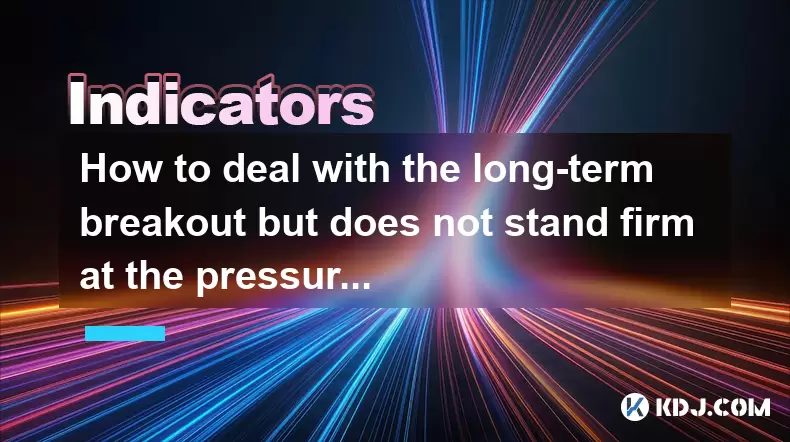
Understanding Long-Term Breakouts in Cryptocurrency Trading
In the world of cryptocurrency trading, a long-term breakout refers to a scenario where the price of a digital asset moves beyond a previously established resistance or support level over an extended period. This movement is often seen as a potential signal for a new trend. However, not all breakouts result in sustained momentum. Traders frequently encounter situations where the price breaks through a key level but fails to consolidate above it, leading to confusion and hesitation.
When analyzing long-term breakouts, it's essential to distinguish between momentum-driven movements and actual trend reversals. A genuine breakout should be accompanied by increased volume and sustained price action above the resistance level. If this doesn't happen, it may indicate that the market lacks conviction behind the move.
Key Insight:
The absence of strong follow-through after a breakout suggests weak institutional participation and lack of consensus among traders regarding the new direction.Identifying False Breakouts in Crypto Charts
False breakouts are common in the volatile cryptocurrency markets. They occur when the price briefly surpasses a significant level only to reverse shortly afterward. Identifying these early can prevent costly mistakes.
To detect false breakouts, traders should monitor several technical indicators:
- Volume Analysis: A legitimate breakout typically sees a surge in trading volume. If the breakout occurs on low volume, it’s likely a false signal.
- Price Retest: After breaking out, if the price revisits the breakout zone quickly without establishing support, it's a red flag.
- Timeframe Confirmation: Use multiple timeframes (e.g., daily, weekly) to confirm whether the breakout holds across different charts.
Important Note:
Always wait for confirmation before entering a trade post-breakout. Patience helps avoid premature entries based on misleading signals.Strategies to Handle Non-Confirming Breakouts
When faced with a situation where a breakout does not hold, traders must adapt their strategies accordingly. Here are some effective approaches:
- Wait for Re-entry Opportunities: Instead of chasing the initial breakout, look for a retest of the broken level as support. This provides a second chance to enter with better risk-reward ratios.
- Use Tight Stop-Loss Orders: If you decide to trade the breakout, place a stop-loss just below the breakout level to limit losses if the price reverses.
- Monitor Order Flow: Watch for large buy walls or sell walls on order books to gauge institutional sentiment.
Critical Action:
Avoid emotional trading during uncertain breakouts. Stick to predefined entry and exit rules regardless of short-term volatility.Technical Tools for Analyzing Breakout Validity
Several tools help traders assess whether a breakout is valid or not:
- Relative Strength Index (RSI): High RSI values during a breakout suggest overbought conditions, increasing the likelihood of a pullback.
- MACD Divergence: If the MACD line diverges from the price movement, it could signal a weakening trend.
- Fibonacci Extensions and Retracements: These levels help identify potential reversal zones after a breakout.
Using a combination of these tools increases the probability of accurately identifying fake breakouts.
Essential Tip:
Combine at least two technical indicators to validate breakout strength before making any trading decisions.Risk Management When Breakouts Fail
Proper risk management is crucial when dealing with failed breakouts. Even experienced traders can't predict every market move, so limiting exposure is vital.
Here are practical steps:
- Position Sizing: Allocate only a small percentage of your portfolio to each trade to minimize impact from failed breakouts.
- Trailing Stops: If a breakout initially seems successful, use trailing stops to protect profits while allowing room for natural price fluctuations.
- Exit Plans: Define clear exit criteria before entering a trade. For example, if the price closes below the breakout level for two consecutive days, consider closing the position.
Risk Control Principle:
Never risk more than 2% of your total capital on a single breakout trade, especially when confirmation is unclear.Frequently Asked Questions
What is the difference between a breakout and a pullback?
A breakout occurs when the price moves beyond a key support or resistance level with momentum. A pullback, on the other hand, is a temporary retracement within an ongoing trend, often used by traders to find better entry points.
Can I still profit from a failed breakout?
Yes, skilled traders often look for reversal setups following a failed breakout. By identifying rejection patterns like wicks or engulfing candles near the broken level, traders can take contrarian positions.
Should I always wait for a retest after a breakout?
It's generally safer to wait for a retest, especially in highly volatile crypto markets. A retest confirms whether the level has truly flipped from resistance to support (or vice versa), offering a clearer entry point.
How do I know if a breakout will hold in the long term?
Long-term validity depends on volume sustainability, market sentiment, and fundamental factors influencing the asset. Monitoring news, on-chain metrics, and macroeconomic events can provide additional context.
Disclaimer:info@kdj.com
The information provided is not trading advice. kdj.com does not assume any responsibility for any investments made based on the information provided in this article. Cryptocurrencies are highly volatile and it is highly recommended that you invest with caution after thorough research!
If you believe that the content used on this website infringes your copyright, please contact us immediately (info@kdj.com) and we will delete it promptly.
- 2025-W Uncirculated American Gold Eagle and Dr. Vera Rubin Quarter Mark New Products
- 2025-06-13 06:25:13
- Ruvi AI (RVU) Leverages Blockchain and Artificial Intelligence to Disrupt Marketing, Entertainment, and Finance
- 2025-06-13 07:05:12
- H100 Group AB Raises 101 Million SEK (Approximately $10.6 Million) to Bolster Bitcoin Reserves
- 2025-06-13 06:25:13
- Galaxy Digital CEO Mike Novogratz Says Bitcoin Will Replace Gold and Go to $1,000,000
- 2025-06-13 06:45:13
- Trust Wallet Token (TWT) Price Drops 5.7% as RWA Integration Plans Ignite Excitement
- 2025-06-13 06:45:13
- Ethereum (ETH) Is in the Second Phase of a Three-Stage Market Cycle
- 2025-06-13 07:25:13
Related knowledge
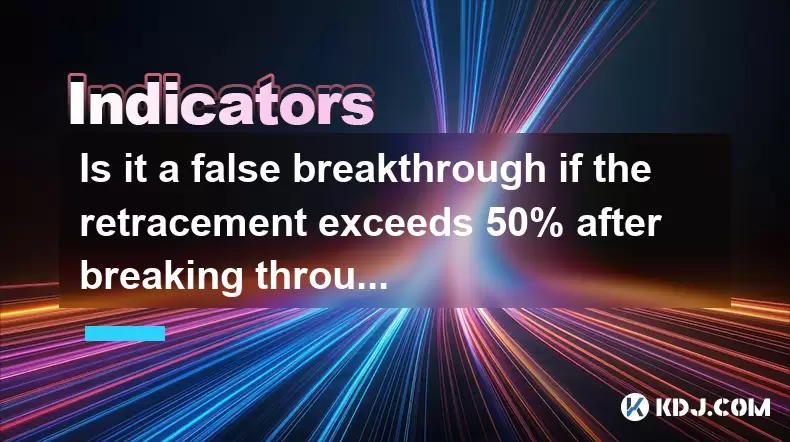
Is it a false breakthrough if the retracement exceeds 50% after breaking through the platform?
Jun 17,2025 at 08:01pm
Understanding Breakouts and Retracements in Cryptocurrency TradingIn cryptocurrency trading, breakouts refer to when the price of an asset moves beyond a defined support or resistance level with increased volume. These events often attract traders looking to capitalize on momentum. However, not all breakouts are valid. A false breakout, also known as a ...
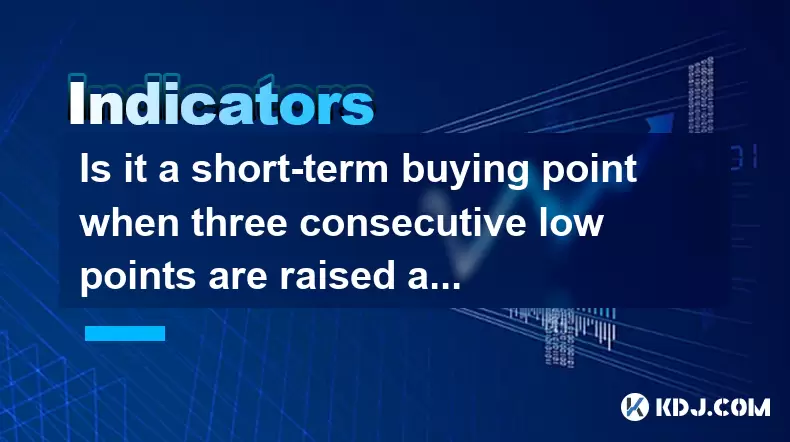
Is it a short-term buying point when three consecutive low points are raised at the 30-minute level?
Jun 17,2025 at 08:14pm
Understanding the Three Consecutive Low Points PatternIn technical analysis, identifying patterns in price movements is essential for making informed trading decisions. One such pattern that traders often observe is when three consecutive low points are raised within a specific timeframe — in this case, the 30-minute chart. This pattern suggests a poten...
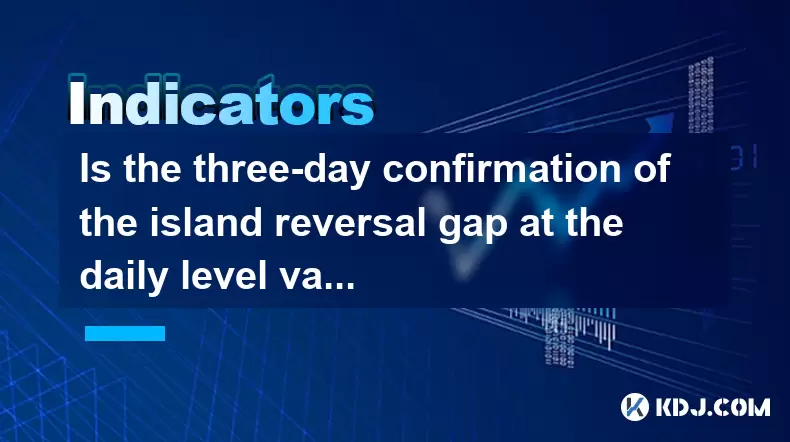
Is the three-day confirmation of the island reversal gap at the daily level valid?
Jun 17,2025 at 09:49pm
Understanding the Island Reversal Gap in Cryptocurrency TradingIn cryptocurrency trading, technical analysis plays a pivotal role in identifying potential market reversals. One such pattern is the island reversal gap, which signals a possible trend change. This pattern consists of a gap followed by a period of consolidation or sideways movement and then...
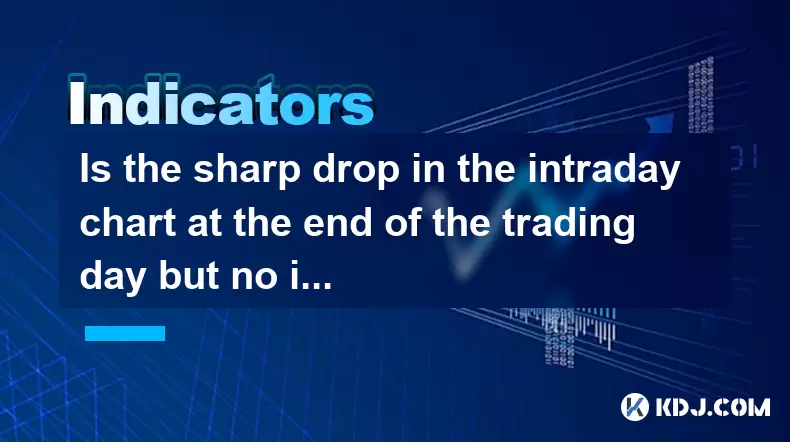
Is the sharp drop in the intraday chart at the end of the trading day but no increase in volume a trap to sell?
Jun 17,2025 at 08:35pm
Understanding the Intraday Chart DynamicsIn cryptocurrency trading, intraday charts are widely used by traders to analyze short-term price movements. These charts display price fluctuations within a single trading day and help traders make informed decisions based on real-time data. One common phenomenon observed is a sharp drop in price near the end of...
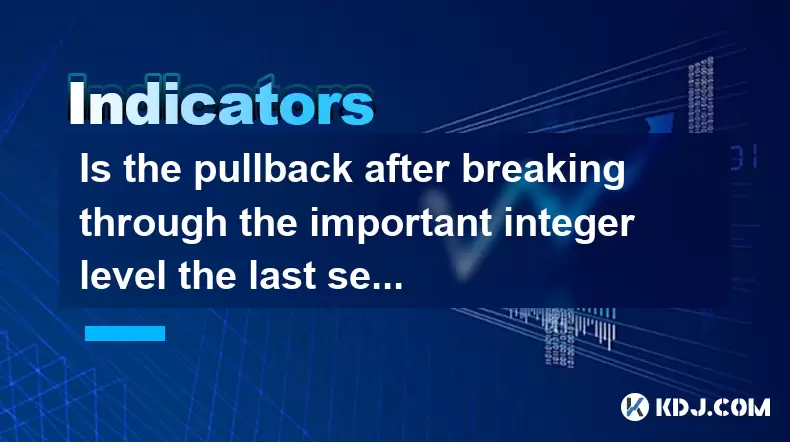
Is the pullback after breaking through the important integer level the last selling point?
Jun 17,2025 at 08:57pm
Understanding Important Integer Levels in Cryptocurrency TradingIn the world of cryptocurrency trading, certain price levels hold significant psychological and technical importance. These are commonly referred to as important integer levels—such as $10,000 for Bitcoin or $1,000 for Ethereum. These levels often act as strong support or resistance zones d...
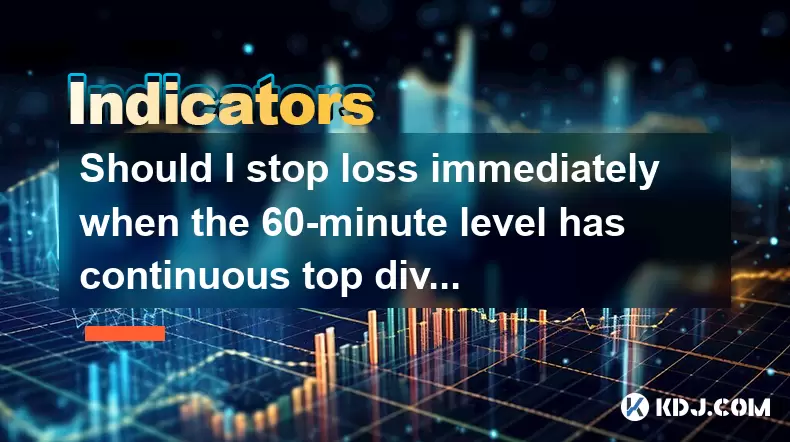
Should I stop loss immediately when the 60-minute level has continuous top divergence?
Jun 17,2025 at 05:28pm
Understanding Top Divergence in the 60-Minute ChartIn cryptocurrency trading, top divergence refers to a technical signal where the price of an asset makes higher highs while the indicator (often RSI or MACD) makes lower lows. This is commonly interpreted as a sign of weakening momentum and potential reversal. When this occurs on the 60-minute chart, it...

Is it a false breakthrough if the retracement exceeds 50% after breaking through the platform?
Jun 17,2025 at 08:01pm
Understanding Breakouts and Retracements in Cryptocurrency TradingIn cryptocurrency trading, breakouts refer to when the price of an asset moves beyond a defined support or resistance level with increased volume. These events often attract traders looking to capitalize on momentum. However, not all breakouts are valid. A false breakout, also known as a ...

Is it a short-term buying point when three consecutive low points are raised at the 30-minute level?
Jun 17,2025 at 08:14pm
Understanding the Three Consecutive Low Points PatternIn technical analysis, identifying patterns in price movements is essential for making informed trading decisions. One such pattern that traders often observe is when three consecutive low points are raised within a specific timeframe — in this case, the 30-minute chart. This pattern suggests a poten...

Is the three-day confirmation of the island reversal gap at the daily level valid?
Jun 17,2025 at 09:49pm
Understanding the Island Reversal Gap in Cryptocurrency TradingIn cryptocurrency trading, technical analysis plays a pivotal role in identifying potential market reversals. One such pattern is the island reversal gap, which signals a possible trend change. This pattern consists of a gap followed by a period of consolidation or sideways movement and then...

Is the sharp drop in the intraday chart at the end of the trading day but no increase in volume a trap to sell?
Jun 17,2025 at 08:35pm
Understanding the Intraday Chart DynamicsIn cryptocurrency trading, intraday charts are widely used by traders to analyze short-term price movements. These charts display price fluctuations within a single trading day and help traders make informed decisions based on real-time data. One common phenomenon observed is a sharp drop in price near the end of...

Is the pullback after breaking through the important integer level the last selling point?
Jun 17,2025 at 08:57pm
Understanding Important Integer Levels in Cryptocurrency TradingIn the world of cryptocurrency trading, certain price levels hold significant psychological and technical importance. These are commonly referred to as important integer levels—such as $10,000 for Bitcoin or $1,000 for Ethereum. These levels often act as strong support or resistance zones d...

Should I stop loss immediately when the 60-minute level has continuous top divergence?
Jun 17,2025 at 05:28pm
Understanding Top Divergence in the 60-Minute ChartIn cryptocurrency trading, top divergence refers to a technical signal where the price of an asset makes higher highs while the indicator (often RSI or MACD) makes lower lows. This is commonly interpreted as a sign of weakening momentum and potential reversal. When this occurs on the 60-minute chart, it...
See all articles

























































































